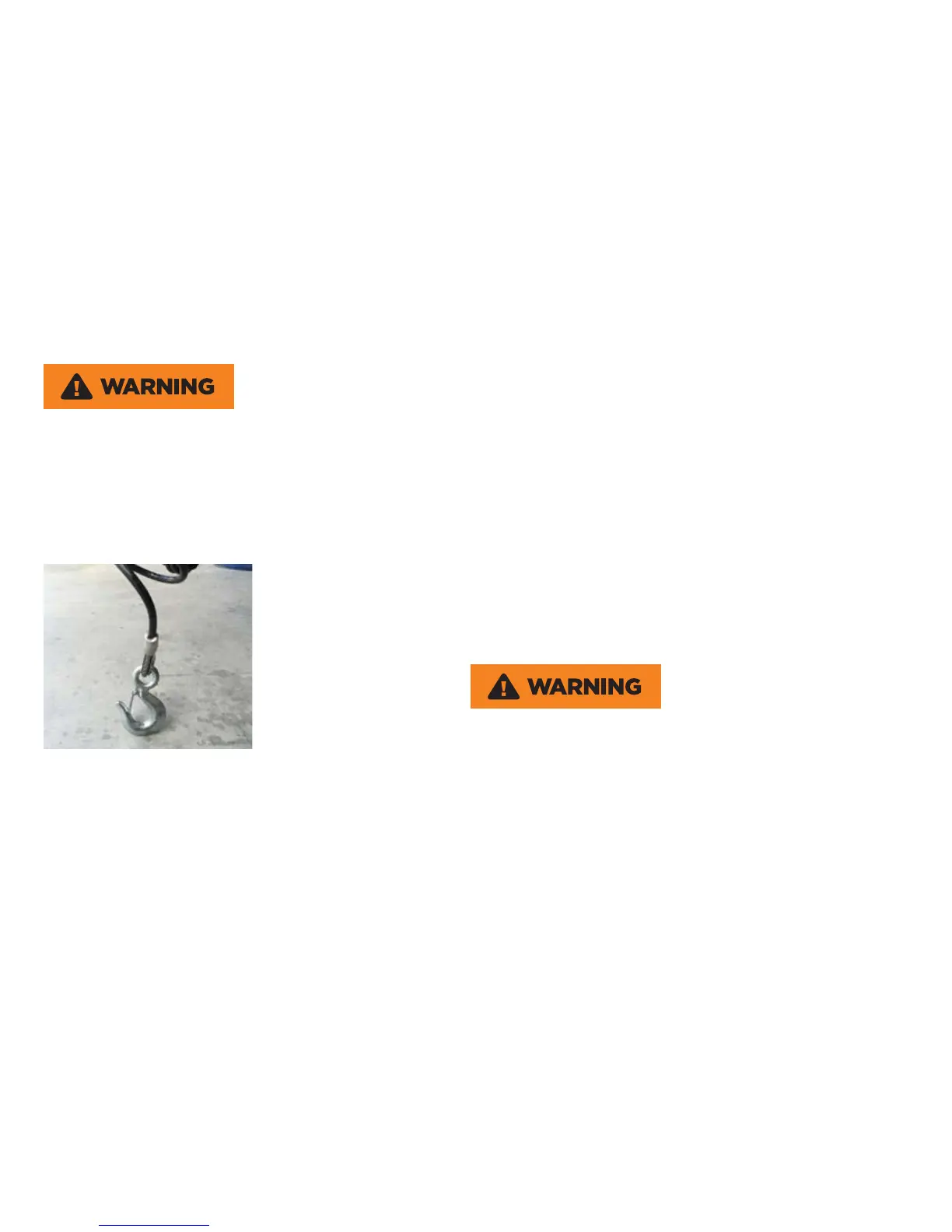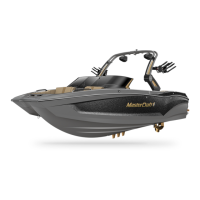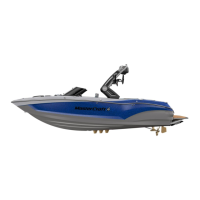2016 OWNERS MANUAL / 0383
Trailer sway control devices that restrict the operation of the actu-
ator MUST NOT be used. These devices can limit the effectiveness
of the trailer brakes work.
Before each trip, ensure that the safety cables are correctly at-
tached between the tow vehicle and the trailer. Secure the break-
away cable to the bumper or frame of the tow vehicle as close to
center as possible but do not attach to the safety cables.
As noted above, the trailer hitch should provide a place for attach-
ing safety cables, through holes or rings on both sides of the hitch
ball. It is strongly recommended, and most states require, that the
cables be crossed under the trailer tongue (e.g., the cables on the
left side of the trailer tongue should be attached to the hole or ring
on the right side of the hitch ball, and the right side cable should be
attached to the hole or ring on the left side of the hitch ball). This will
slow the process of the dropping of the trailer tongue if the trailer
coupler separates from the hitch ball. The cables should be rigged
as tightly as possible, with just enough slack to permit tight turns. If
for any reason it becomes necessary to replace a safety cable, do
not substitute with any part other than a genuine MasterCraft cable.
Breakaway Cable
Secure the breakaway cable to the bumper or frame of the tow
vehicle as close to the center as possible, but do not attach it to the
safety chains. The cable MUST hang clear of the trailer tongue and
be long enough to permit sharp turns without pulling the cable and
will not be applied unless the safety chains fail. The intent of the
breakaway cable is to apply the brakes if the safety chains fail.
Do not loop an S-hook over the breakaway cable to attach it.
Never tow a trailer without the breakaway cable secured to the tow
vehicle.
To retract the breakaway cable, slide the coupler fully forward and
push up on the push rod release bracket located on the underside
and behind the hitch ball socket.

